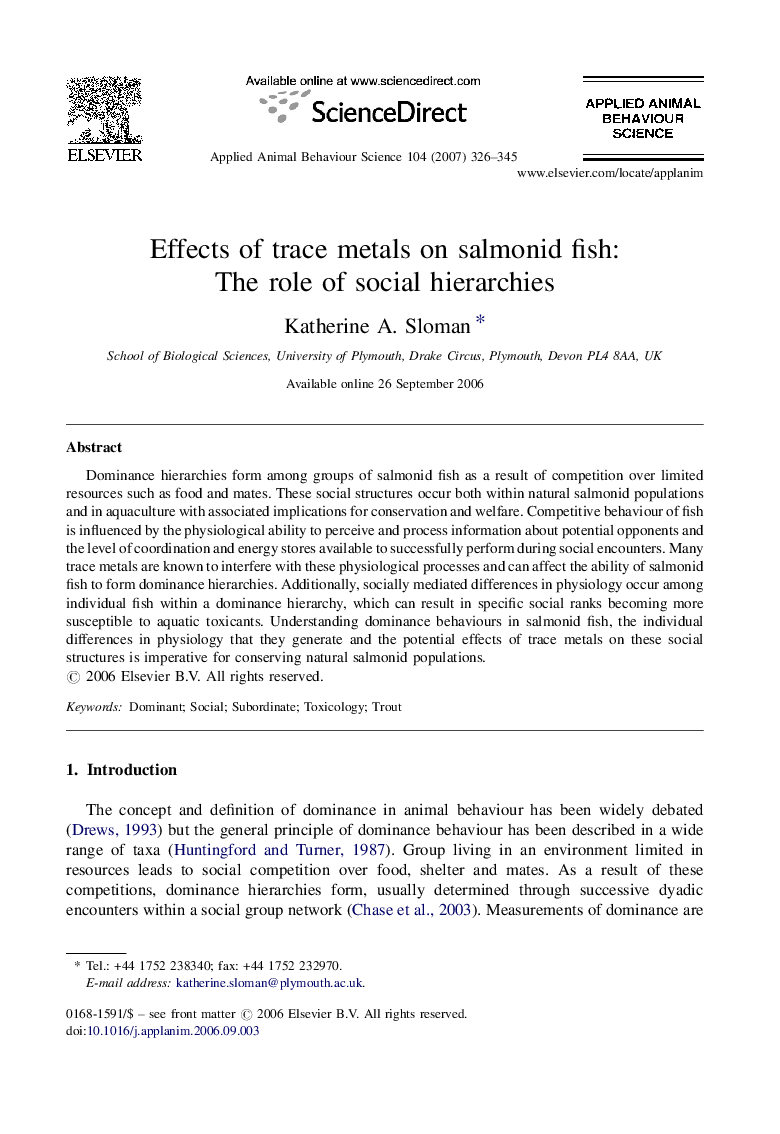| Article ID | Journal | Published Year | Pages | File Type |
|---|---|---|---|---|
| 4523960 | Applied Animal Behaviour Science | 2007 | 20 Pages |
Dominance hierarchies form among groups of salmonid fish as a result of competition over limited resources such as food and mates. These social structures occur both within natural salmonid populations and in aquaculture with associated implications for conservation and welfare. Competitive behaviour of fish is influenced by the physiological ability to perceive and process information about potential opponents and the level of coordination and energy stores available to successfully perform during social encounters. Many trace metals are known to interfere with these physiological processes and can affect the ability of salmonid fish to form dominance hierarchies. Additionally, socially mediated differences in physiology occur among individual fish within a dominance hierarchy, which can result in specific social ranks becoming more susceptible to aquatic toxicants. Understanding dominance behaviours in salmonid fish, the individual differences in physiology that they generate and the potential effects of trace metals on these social structures is imperative for conserving natural salmonid populations.
